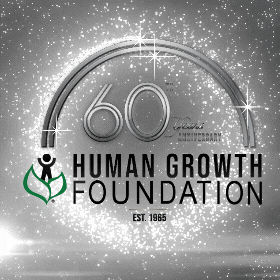成人生長激素缺乏症

成人生長激素缺乏症的診斷
直到幾年前,測量腦下垂體生長能力的生長激素刺激試驗 (GHST) 仍被認為是診斷 AGHD 的主要生化試驗。在過去的幾年中,GHST 確定一個人是否患有 AGHD 的準確性受到越來越多的質疑,因為測試變異性和越來越多的人接受 IGF-I 與 GHST、表型(如上所述的身體和精神特徵、病史)相結合具有顯著的診斷價值;並且,人們越來越認識到,在沒有明確定義的 AGHD 器質性的情況下,接受複雜性的病因。
成人生長激素缺乏症 (GHD) 是一種多因素疾病,其中與腦下垂體腺瘤或其治療相關的腦下垂體功能障礙起著主要作用。部分 GHD 的概念多年來已得到兒科內分泌學家的認可,現在正在成人中進行檢查,以確定 GH 範圍從嚴重 GHD 到非 GHD 水平的人的下丘腦 - 垂體疾病與代謝和人體測量異常之間的關聯。然而,在肥胖、年齡增長以及沒有其他腦下垂體激素缺乏的情況下,部分性 GHD 的診斷變得更加困難。
患有 GHD 的成年人可能有多種體徵和症狀,包括身體組成異常,脂肪量增加(尤其是中心性肥胖)、瘦肌肉量減少、細胞外液量減少、肌肉力量、體力和耐力減弱、缺乏動力、嗜睡、不穩定(情緒變化)、抑鬱和認知功能受損。
全面的生化測試可能會揭示以下也是 AGHD 標誌的情況:脂質失衡、動脈粥狀硬化、肥胖、低密度脂蛋白膽固醇升高和胰島素敏感性降低以及代謝症候群。核磁共振掃描可能會發現腦部結構異常或腫瘤。肺功能測試可能顯示肺呼吸肌肉能力下降。 DEXA(雙能量 X 射線吸收測定法)掃描可能會發現骨質疏鬆症和骨折風險增加。所有這些條件都符合 AGHD。腦下垂體功能減退症和生長激素缺乏症與死亡率增加有關。
綜合生化檢測最初包括但不限於:全血球計數(CBC)和差異血小板、綜合代謝組、甲狀腺組、IGF-I、HbA1c、黃體生成素、卵泡刺激素、睪固酮、雌激素(僅限女性)、DHEAS、雄烯二酮。生化檢測還可以揭示甲狀腺素、睪固酮和雄性激素類固醇(DHEAS 和雄烯二酮)的缺乏、代謝疾病和紊亂,以及可能幹擾 GH 和 IGF-I 的分泌、攝取和利用的遺傳缺陷。
當 IGF-I 較低時,需要進一步調查以確定 IGF-I 較低的原因,包括 (1) IGF-II 和 IGF 結合蛋白的檢測; (2)生長激素刺激試驗,以確定腦下垂體是否具有產生生長激素的能力; (3) 鋅、鎂和硒的水平,這些礦物質是某些酵素正常發揮作用所必需的,而這些酵素對於 IGF-I 及其各種結合蛋白所涉及的代謝過程至關重要;並且可能檢測代謝疾病和紊亂。
AGHD 的診斷通常具有挑戰性,因為缺乏生長參數作為附加因素的診斷因素,以及成人隨著時間的推移而獲得的其他疾病的影響。因此,需要其他標記物來識別患有 GHD 的成年人,並可能從 GH 替代療法中受益。成人 GHD 診斷和治療的共識指南包括有下丘腦-垂體疾病或紊亂證據的患者、兒童期發病的 GHD 患者以及接受過顱腦消融或有頭部外傷史的患者。當其他腦下垂體激素缺乏時,對生長激素缺乏症的懷疑也會增加。 GHD 測試包括使用具有高敏感性和敏感度的激發劑進行生長激素刺激測試(GHST)後測量 GH,包括但不限於胰島素耐受性測試(ITT)。 GHRH 加精胺酸或 GHRH 和 GHRP-6。多項研究結果發現,非刺激血清或尿液測量 GH 水平並不能可靠地預測成人缺乏症。此外,ITT 的管理存在一些潛在風險,重現性值得懷疑,這促使了前面提到的測試的發展。因此,在 ITT 禁忌或不確定的情況下,精胺酸和 GHRH 的組合是一種有效的替代方案。
生長激素缺乏的徵兆和症狀可能被睪固酮或甲狀腺素掩蓋,或由這些荷爾蒙缺乏或其他荷爾蒙功能障礙或代謝失調引起。在這種情況下,rhGH 可能會導致其他荷爾蒙缺乏。例如,皮質醇或與男性睪固酮結合,可透過荷爾蒙紅血球生成素引起繼發性紅血球增多症,導致嚴重甚至嚴重的病症,如血色沉著症、心肌梗塞、中風和癱瘓、肝損傷。 rhGH 還可以刺激 GHD 成人的凝血酶原和活化的部分凝血活酶時間。過量的 GH/rhGH 也會導致癌症風險以及癌症和糖尿病復發的顯著增加。
因此,在診斷和治療 GHD/AGHD 之前識別並排除任何此類病症非常重要。患者的病史以及身體檢查、生化檢測和適當的大腦掃描對於 AGHD 患者的診斷和治療至關重要。
成人生長激素缺乏和腦下垂體功能減退症的治療
目前美國治療 AGHD 的治療方法是 rhGH,經美國食品藥物管理局批准為安全有效的。儘管 rhGH 是由不同的製造商生產的,但其 DNA 測序與天然 GH 相同,無論其製造來源如何。每個製造商的製造流程、rhGH 稀釋液(液體部分)中所含防腐劑的 pH(鹼度/酸度)指數、儲存和穩定性特性以及輸送技術和設備都不同。因此,由於 rhGH 產品之間的生物等效性差異極小,因此所有這些產品及其輸送裝置都是安全有效的。一般來說,透過測試內分泌學家確定的定期間隔、身體組成的變化、骨重塑和血脂值來監測rhGH治療。
在治療 AGHD 的最初幾年,rhGH 按體重給藥,導致 IGF-I 水平相對較高。根據近年來患者的經驗,對於水腫和關節疼痛等輕微但嚴重的不良事件,發現較低的劑量是有效的,但更安全,同時降低 IGF-I 水平。此外,人年齡越大,對 IGF-I 越敏感,需要較少的 rhGH 來達到安全有效的 IGF-I 水平。 HGF論壇的經驗表明,對於中年成人,每天0.4毫克至0.8毫克的rhGH劑量,對於老年人,0.2至0.4的劑量,可能足以治療AGH。這些估計值與最近關於劑量方案的研究中發現的足夠的劑量方案一致。
重組生長激素治療的好處
每天一次皮下注射 rhGH 可以逆轉生長激素缺乏症的許多症狀和徵兆。不可忽視的是,rhGH 與 IGF-I 的相關性無關,它在消除或減少不穩定(情緒起伏)和抑鬱方面具有重要的益處,使其保持在相對較低的水平,無論體重決定的毫克/公斤/周如何。 HGF論壇上的經驗表明,無論體重如何,至少對於成年人來說,每天0.2毫克的rhGH可以消除或顯著減輕不穩定性和憂鬱症。這正面結果的病理生理學似乎是 rhGH 對中樞神經系統 (CNS) 神經傳導物質的自然調節和調節作用,其效果似乎比精神藥物更好。 (自然生理學)。
結果:
在封閉標籤階段進行 3 個月和 6 個月的 rhGH 治療後,與基線相比,觀察到 rhGH 組的注意力表現有顯著改善,但安慰劑組則沒有。 6 個月後,rhGH 和安慰劑治療組在手指消除測試中的注意力分數有顯著差異,而在追蹤測試中則略有不同。相較之下,治療期間的長期語言記憶和非語言智力與基線相比沒有改善,而 GH 組和安慰劑組在 3 個月和 6 個月後的短期記憶都有所改善。這被認為是安慰劑或練習效果。在開放標籤階段,GH 組的注意力進一步改善,隨後安慰劑組接受 rhGH 治療 3 個月和 6 個月也顯著改善了注意力表現,支持了 rhGH 組在雙盲階段前 6 個月的結果。結論:RhGH 治療至少 3 個月似乎對患有 GH 缺乏的成年腦下垂體功能減退患者的注意力表現有有益的影響。我們的研究不支持 GH 在影響語言記憶或非語言智力方面的作用。
引入重組生長激素 (GH) 治療 GHD 開闢了新的治療途徑,但也引起了人們對 GH 可能產生不良長期代謝影響的擔憂,例如 GH 對胰島素敏感性和葡萄糖耐受惡化的潛在影響。研究表明,在急性和慢性治療期間,GH 會透過刺激脂肪分解並伴隨從葡萄糖氧化到脂質氧化的轉變而誘導胰島素阻抗。然而,雖然這是 GH 治療的一致效果,但本身並不意味著它會導致糖耐量異常和糖尿病。本文討論了 GH 的這種影響和其他潛在的長期代謝影響,並提出了未來研究需要解決的一些問題。
即使維持在生理劑量範圍內,LDL-膽固醇異常似乎也會隨著 GH 替代而改善;與兒童期發病的 GHD 男性患者相比,基線總膽固醇和低密度脂蛋白膽固醇值較高的受試者以及成人發病的 GHD 女性患者的改善最大。相反,高三酸甘油酯血症不能透過生長激素替代來糾正。大多數報告表明 GH 替代會增加脂蛋白 a 水平。需要長期觀察來確定 GH 替代是否可以降低 GHD 成人的心血管發病率和死亡率。與 GHD 相關的肌肉質量和力量減少已被證明在 GH 替代後得到改善。 GH 治療還可以改善 GHD 成人的最大和次最大運動表現。對 GHD 成人的蛋白質代謝、能量消耗和甲狀腺代謝的影響也很重要。
GH替代對所有年齡層的GHD患者的肌肉質量和功能都有長期有益的影響,儘管與兒童期發病的GHD患者相比,對於年輕男性和成年發病的GHD患者的肌肉質量和功能正常化似乎有更大的影響。結果還表明,伴隨的運動訓練可能會進一步改善 GH 替代療法的效果。
版權所有 © 2006 S. Karger AG,巴塞爾卷。 50.第4期,1998年
短期 rhGH 替代後所描述的 rhGH 替代的有益效果可以長期持續長達 7 年
了解 GH 拮抗肌肉中胰島素刺激的葡萄糖處理的機制是未來的一個重要研究領域,對從營養不良到肥胖和 2 型糖尿病等各種臨床病症都有影響。
結論是,患有 GHD 的個體確實表現出認知障礙,並且透過 GH 治療可以在一定程度上改善這種情況。
大多數現有研究表明,GHD 會導致記憶力、處理速度和注意力方面發生微小但與臨床相關的變化。儘管可靠的干預研究數量有限,但其中一些變化可能會透過生長激素替代品逆轉。除了 GHD 患者 GH 替代後神經心理改善可能具有臨床意義外,觀察到的結果可能對研究與生長激素軸活動變化相關的其他條件下的神經認知表現以及了解潛在的病理生理機制感興趣。
一項針對缺乏 GH 的成年人的研究發現,經過 33 個月的 GH 治療,患有 GHD 的男性的 BMD 和 BMC 增加程度高於女性。 GH 治療期間血清胰島素樣生長因子 I 和生化骨標記水平的增加也存在性別差異。這些發現的原因尚不清楚,且性類固醇在確定 GH 治療反應中的作用仍有待充分闡明。
在所有研究的骨骼部位,BMD(z 分數)和年齡之間都觀察到顯著的正相關。整體而言,除了年齡小於 30 歲的患者外,很少有患者骨量顯著減少(即 BMD z 得分小於 -2);對 BMD 進行校正以提供 BMD 的偽體積測量結果表明,年輕患者的身材降低可能至少部分地解釋了 BMD z 分數低於正常的頻率較高的原因。然而,儘管 BMD 正常,但由於與肌肉無力和視野缺損相關的跌倒增加,老年 GHD 成人中骨折發生率仍可能增加。
患有 AO-IGHD 和 AO-MPHD 的 GHD 患者俱有相似的臨床表現,對 GH 替代的反應也相似。 CO-IGHD 患者受 GHD 的影響比 CO-MPHD 患者要輕,但是,儘管如此,兩組患者都表現出相當的不良血脂狀況和較差的生活質量,並且對 GH 替代反應良好。這些發現支持這樣的觀點:接受傳統替代療法的腦下垂體功能減退症患者的大部分(如果不是全部)代謝方面,僅由 GH 負責,無論發病年齡或病因如何。因此,GH 替代療法不僅對伴隨額外荷爾蒙缺陷的 GHD 患者俱有潛在益處,而且治療適應症也必須擴大到單純性 GHD 患者。
生長激素治療可能會增加皮質醇代謝,這反過來可能會導致腦下垂體功能減退患者的腎上腺功能不全,這些患者的腦下垂體訊息激素(促腎上腺皮質激素)部分缺乏。但 GHD 也會增加包括肝臟和脂肪組織在內的關鍵目標組織中皮質醇的產生,導致胰島素阻抗和內臟肥胖。然而,GH 對腦下垂體功能減退症患者心血管危險因子的有益作用可能是皮質醇代謝改變的間接影響。此外,GH/IGF-I對皮質醇代謝的調節可能是常見疾病(例如向心性肥胖和特發性骨質疏鬆症)發病機制的基礎。
成人生長激素缺乏症的醫療保險範圍
用於治療 AGHD 的 rhGH 保險範圍對於 AGHD 的診斷而言是另一回事。在美國,許多保險公司只為嚴重 AGHD 承保 rhGH,如一兩個 GHST 所證明的那樣,每個 GHST 都使用不同的刺激劑,三小時內採集的任何五個血液樣本中 nGH 的截止點為 5 ng/mL,但全垂體功能減退、創傷或垂體消融的情況除外。在後一種情況下,這種情況加上低 IGF-I 以及與 AGHD 一致的體徵和症狀通常被保險公司接受為 rhGH 承保。
主要資訊來源
1. 美國臨床內分泌學家協會 (AACE) 成人和兒童生長激素使用臨床實踐指南 - 2003 年更新
2. 兒童生長激素使用指南更新:勞森威爾金斯兒科協會
3. 內分泌學會藥物與治療委員會






